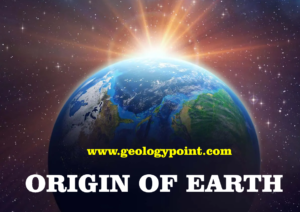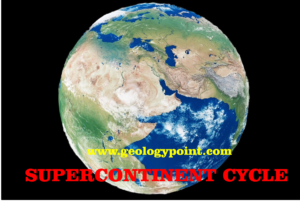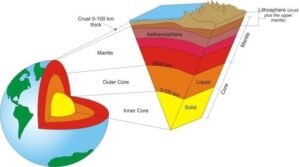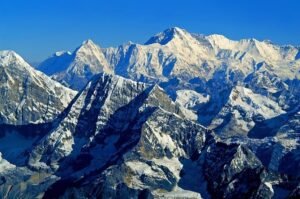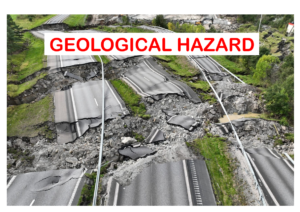Introduction: A Timeless Question
How did our home planet, Earth, come into being? It’s a question that has fascinated humans for millennia. Ancient myths offered poetic explanations, but today, science provides us with a powerful narrative grounded in physics, chemistry, astronomy, and geology. The Earth, as we know it, is the product of cosmic events that occurred over 4.5 billion years ago—a story that begins not on Earth, but in the stars.
The Birthplace: A Star-Studded Nursery
The origin of Earth is rooted in the broader formation of the solar system, which itself began in a giant molecular cloud of gas and dust in our Milky Way galaxy. About 4.6 billion years ago, this interstellar cloud began to collapse under the influence of gravity—possibly triggered by a nearby supernova explosion. As it collapsed, it spun faster and flattened into a disk, forming what scientists call the solar nebula.
At the center of this swirling disk, matter accumulated and ignited to form our Sun. The remaining material in the disk—rich in elements like silicon, iron, oxygen, carbon, and hydrogen—began clumping together, forming the building blocks of planets called planetesimals.
The Hectic Youth of the Earth
As planetesimals collided and merged due to gravitational attraction, larger bodies formed—some of which would become planets. Earth was one of them. In this early period, known as the Hadean Eon (from ~4.6 to 4.0 billion years ago), the Earth was a violent, molten mass bombarded constantly by asteroids and comets.
This process, called accretion, not only built Earth but also heated it. The kinetic energy from impacts, combined with radioactive decay of elements like uranium and thorium, caused Earth’s interior to become hot enough to partially melt.
During this molten phase, Earth differentiated into layers: the dense elements like iron and nickel sank to form the core, while lighter silicate materials rose to form the mantle and crust. This internal layering was a crucial step in Earth’s development, laying the groundwork for magnetic shielding and tectonic activity.
The Formation of the Moon
One of the most dramatic events in Earth’s early history was the giant impact hypothesis—the prevailing theory for the Moon’s origin. According to this theory, a Mars-sized body, often referred to as Theia, collided with the early Earth around 4.5 billion years ago.
The impact was so powerful that a large portion of Earth’s outer layer and debris from Theia were ejected into orbit. Over time, this debris coalesced to form the Moon. Evidence supporting this includes the similar isotopic composition of Earth and Moon rocks, as well as computer simulations of planetary collisions.
The Moon has since played a stabilizing role for Earth—its gravitational pull helped slow Earth’s rotation and stabilize its axial tilt, influencing climate patterns and the rhythm of tides.
Cooling Down: The First Crust and Oceans
As bombardment slowed and Earth’s surface began to cool, the first solid crust began to form. Although constantly recycled by volcanic activity and impacts, some ancient zircon crystals found in Australia suggest that fragments of Earth’s crust existed as early as 4.4 billion years ago.
Simultaneously, water began to accumulate on the surface. But where did this water come from? Scientists believe that some water was degassed from the Earth’s interior through volcanic eruptions, while additional water may have been delivered by icy comets and asteroids during a period known as the Late Heavy Bombardment (~4.1 to 3.8 billion years ago).
Eventually, this led to the formation of Earth’s first oceans, creating a setting potentially suitable for life.
The Atmosphere: From Toxic to Life-Supporting
The early Earth’s atmosphere was starkly different from what we breathe today. The first atmosphere, composed mostly of hydrogen and helium, was likely blown away by solar winds. The second atmosphere, formed by volcanic outgassing, consisted of carbon dioxide, methane, water vapor, nitrogen, and sulfur gases—with little or no oxygen.
This dense and hostile environment gradually evolved. The turning point came with the emergence of early microbial life—cyanobacteria—which began photosynthesizing, releasing oxygen as a byproduct. This led to the Great Oxygenation Event around 2.4 billion years ago, fundamentally transforming Earth’s atmosphere and enabling the evolution of aerobic (oxygen-using) life.
The Role of Plate Tectonics
One of Earth’s defining geological processes—plate tectonics—also began early in its history, though exactly when is debated. Plate tectonics is responsible for continental drift, mountain building, earthquakes, and volcanoes, and plays a key role in cycling nutrients and stabilizing the planet’s climate through the carbon-silicate cycle.
Continents have formed and broken apart repeatedly through supercontinent cycles, including famous landmasses like Rodinia, Gondwana, and Pangaea. These movements shaped the geography, climate, and even the evolution of life on Earth.
Earth’s Uniqueness in the Solar System
Among all planets in our solar system, Earth remains unique in many ways:
- It supports liquid water on the surface.
- It has a protective magnetic field generated by its iron core.
- Its atmosphere is rich in oxygen and supports a diverse biosphere.
- It has plate tectonics, which continually renew and reshape the surface.
These conditions make Earth not only habitable but also dynamically evolving, with a delicate balance of systems that support life.

